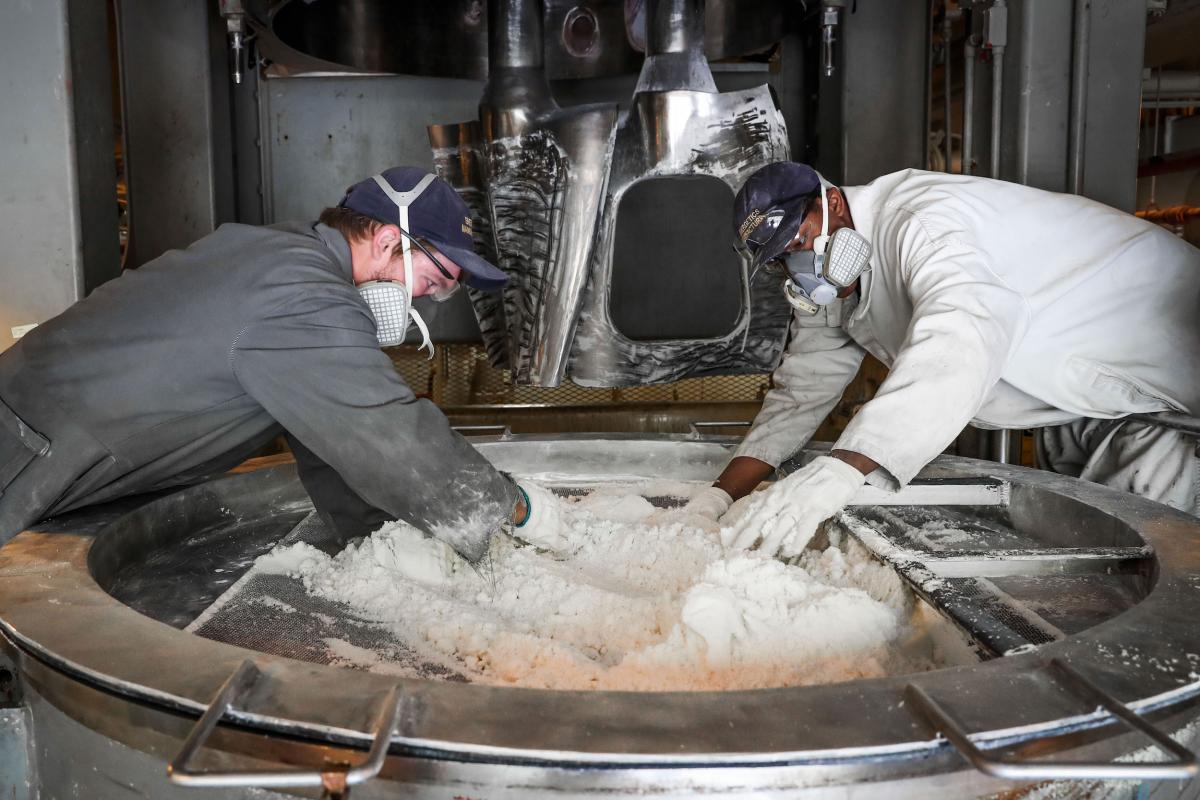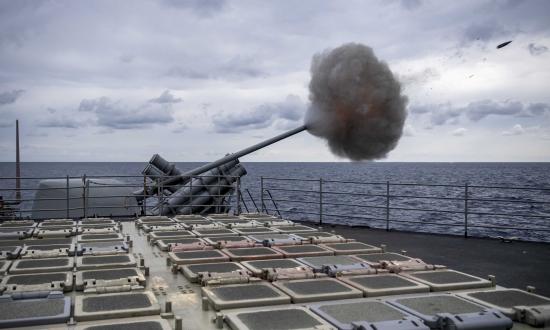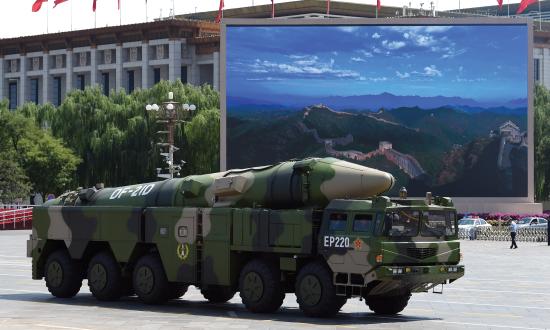When an international incident occurred during the Cold War, the first question often asked by the President was “Where are the carriers?” In recent weeks, many articles highlight the Department of Defense’s concerns over the estimated three-year industry production delay associated with replacing weapons provided to Ukraine. In response, I offer a variation on the President’s question: “Where are the arsenals?” Two leading causes to the industry production delay are ongoing supply chain issues and workforce shortages, both of which can be moderated by military arsenals. A key mission of the nation’s military arsenals is to help bridge this gap by surging their production levels while industry mobilizes to expand capabilities and capacities for even greater production.
The U.S. government-owned industrial base, including arsenals, is rarely included in the discussions regarding weapons replenishment or war mobilization. In peace, private industry has no financial incentive to maintain a commercial arsenal capable of surging to wartime production levels. Therefore, it is necessary to use government-owned industrial bases for continual replenishment and mobilization, for which they were built. Naval Surface Warfare Center Indian Head Division (NSWC IHD) is the Navy’s only arsenal and the nation’s only remaining full-spectrum, all-domain energetics center (energetics include the explosives and propellants that give modern munitions their capabilities and lethality). Based on my experiences at NSWC IHD, I contend that arsenals are not mentioned as an additional production resource because their deterioration inhibits their ability to fully bridge the aforementioned gap. This begs the question: How did this situation develop, and what can be done about it?
Arsenal Atrophy
The 1990s “peace dividend” following the Cold War, the adoption of the working capital fund (WCF) model, and the subsequent elimination of underutilized plant capacity (UPC) funding all contributed to arsenal atrophy. The WCF was intended to put government-owned facilities (including arsenals) on a more business-focused footing through waste reduction and increased responsiveness. However, it had the unintended consequence of decreasing the ability to maintain the capability and capacity to quickly surge production while industry mobilized, which is exactly what UPC funding was designed to do. UPC funded the activities required to ensure that equipment remained functional and manpower remained capable of rapidly expanding production levels when necessary. Energetics production is unlike that of other industries because of the hazards inherent in working with such materials, so it requires a proficient workforce that understands energetics safety at every level—skilled inspectors to ensure designs are properly fabricated and a knowledgeable workforce to run the plants.
It is unfortunate that NSWC IHD, which should serve as a vital and vibrant resource for weapons production, has been allowed to atrophy. At its peak in the 1970s, NSWC IHD did everything “energetics” from basic research and development, engineering, limited manufacturing, sustainment, and demilitarization/disposal of energetics and energetic material systems. Energetic materials are vital components of every weapon system in the U.S. inventory. For example, primers and propellants, rocket motors, explosives, fuses, and the myriad of cartridge and propellant actuated devices (CAD/PAD) are vital to our aircraft safety systems (e.g., ejection seats on tactical aircraft). NSWC IHD stills performs all these functions, but not at the rate and proficiency it once did, especially when it comes to surge manufacturing.
Energetics are unique in their applications and must be tailored for each system and effect. For example, an explosive designed for use in one domain (e.g., aviation) may be entirely inadequate in another (e.g., submarine warfare). A functional arsenal accounts for the complexities of these design challenges, along with the associated production lead times for specialty energetic ingredients and components. Therefore, rather than going straight to the prime contractors to determine how quickly industry is capable of increasing production rates, attention should first be directed to the arsenals that supply the primes with items, such as rocket motor and fuse components, optimized energetic formulations, and fills. Energetics like these provide the range, speed, and/or terminal effects for every munition. Many sources are unique, sole-, single-, or non-domestic. In some cases, legacy sources or materials no longer exist.
These critical supply and manufacturing issues are only recently becoming visible at the prime level, in large part because of the Russian invasion of Ukraine. The extent of U.S. weapons depletion to supply Ukraine is classified, but various defense analysts estimate that significant percentages of the U.S. strategic stockpiles of various weapons are depleted. While the primes report it will take up to two years to manufacture a production run of certain missiles provided to Ukraine, they are short-range missiles and relatively small from an energetics point of view. For heavier warheads and missiles with a more extensive range, the nation needs to invest in the industrial base, especially a full-spectrum arsenal that can manufacture the amounts of tailored energetics needed to achieve desired wartime performance for the most challenging scenarios.
Navy Arsenal Replenishment
The Navy recently established the Naval Energetics Executive Committee to examine and address the Navy’s posture on this subject. The committee was briefed on the arsenal situation and recommendations were made to address atrophied capabilities and capacities. However, follow-on actions to implement these recommendations remain at a standstill. The nation cannot afford to delay any longer the worked needed to revitalize the Navy’s arsenal. The Army recognized similar challenges with their arsenals over the past decade and already has begun to address its shortfalls. Navy-unique energetics components and systems made at NSWC IHD, however, remain at risk.
The misconception exists that the Army-led Single Manager for Conventional Ammunition (SMCA) services all energetics needs and plans for the nation’s entire munitions industrial base. While munitions and energetics for all services share some commonality, there are a tremendous amount of Navy-unique weapons and munitions outside of SMCA’s scope that play a vital role. These include guided projectiles, rockets, missiles, submunitions, naval mines, torpedoes, depth charges, catridge- and propellant-actuated devices, chaff and chaff dispensers, guidance kits for bombs and other ammunition, swimmer weapons, explosive ordnance disposal tools and equipment, related ammunition containers, and packaging materials. The Navy’s arsenal services all these items, yet the NSWC IHD capability and capacity has eroded and needs modernization and repair. If a holistic approach to the nation’s munitions industrial base is realized, national leaders must take special note of those facilities and capabilities outside of SMCA management.
While decades-old problems will not be solved overnight, the Navy must immediately follow the Army’s example and revitalize its sole remaining arsenal at NSWC IHD and re-establish its ability to meet the surge manufacturing requirements for mobilization and munitions replenishment. If this revitalization can be accomplished, then the next time the nation faces an industry mobilization gap, all of the nation’s arsenals will be prepared and able to respond. NSWC IHD’s situation is especially concerning considering the likelihood of Navy-unique weapons playing a significant role in the next great conflict. Maintaining the status quo will cripple the nation’s ability to answer that challenge.






